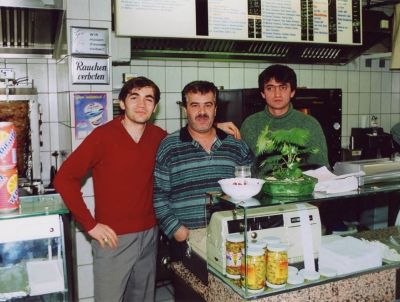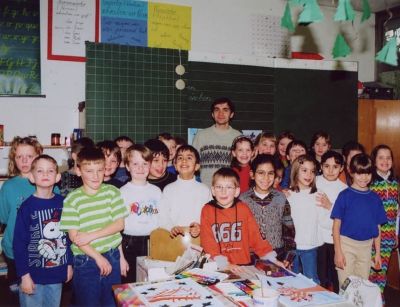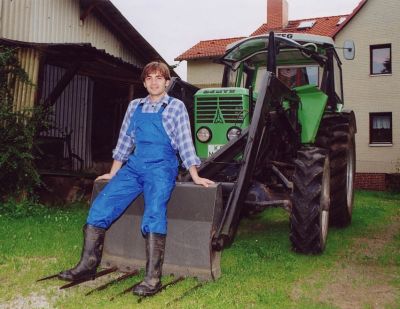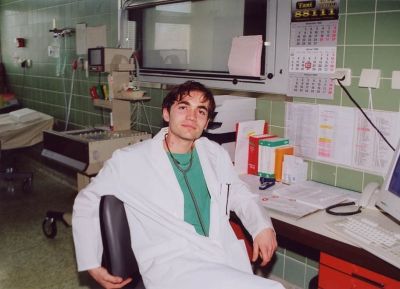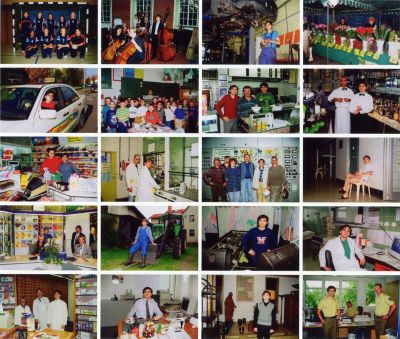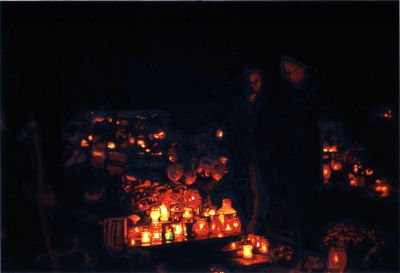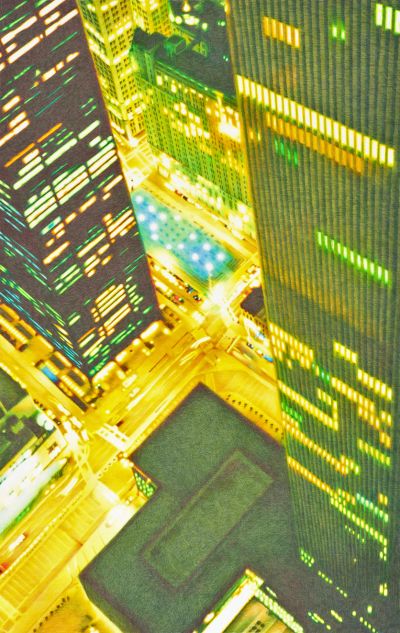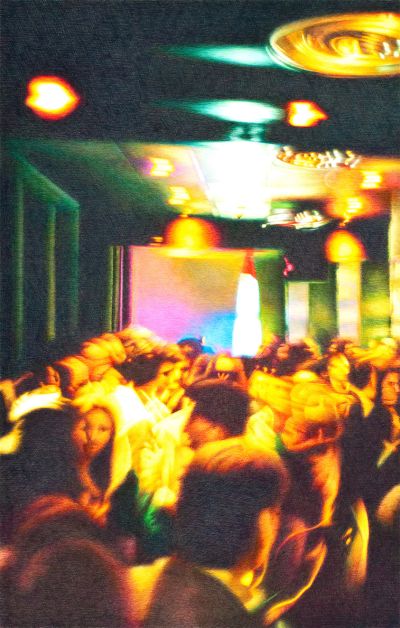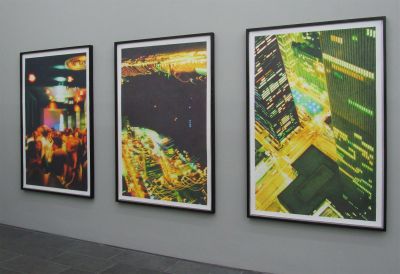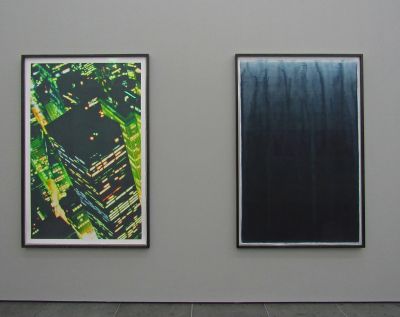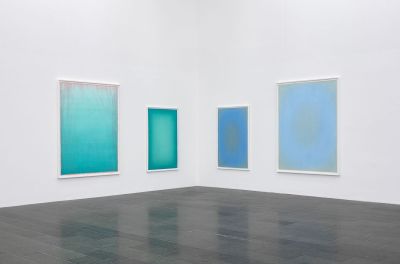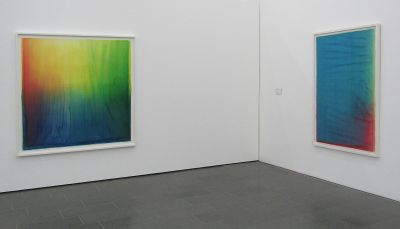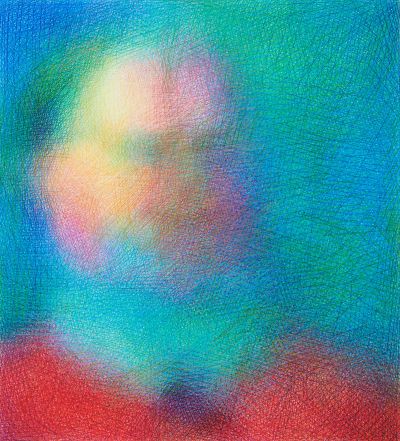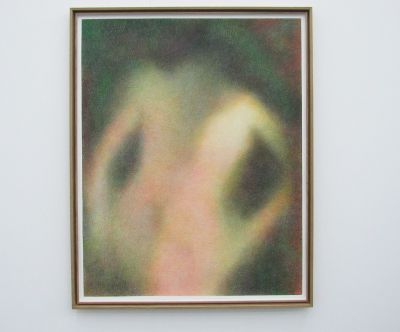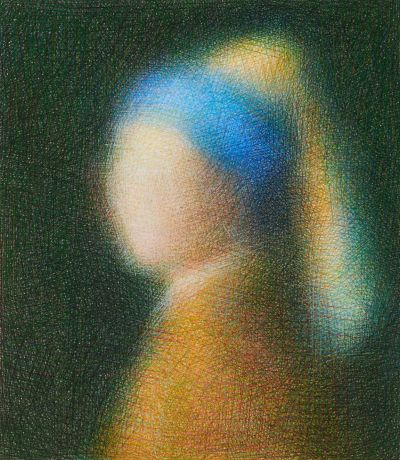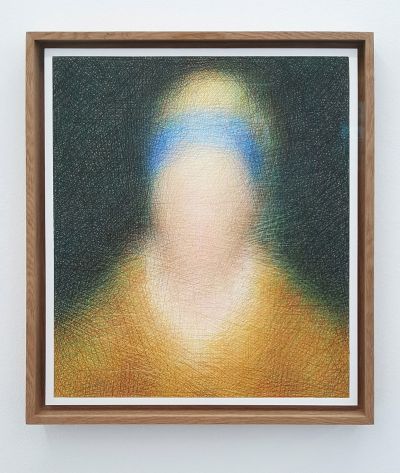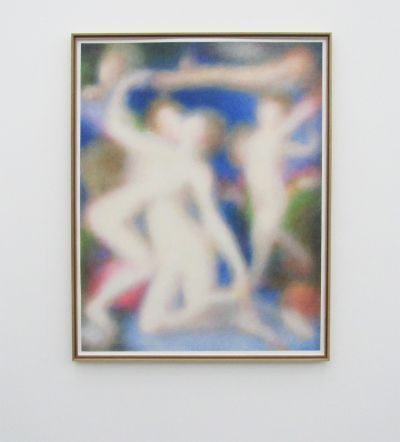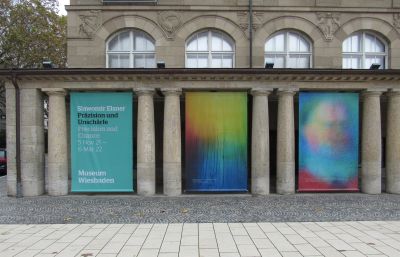Sławomir Elsner. Precision and Chance
Mediathek Sorted
![Sławomir Elsner at the exhibition at the Museum Wiesbaden, 2021 (Alexej von Jawlensky in the background: Spanierin [Spanish Lady], 1913) Sławomir Elsner at the exhibition at the Museum Wiesbaden, 2021 (Alexej von Jawlensky in the background: Spanierin [Spanish Lady], 1913)](/sites/default/files/styles/width_100_tiles/public/Titelbild_23.jpg?itok=J58T-JmV)
This series, which has the overall title “Imaginary Memory” and which most recently comprised 144 works, seventeen of which are shown in the exhibition, is the most comprehensive of Elsner’s works to date. This series of works had already been the impetus for previous exhibitions. In 2015, in the Protestant training centre Hospitalhof in Stuttgart under the title “Nichts ist wie es scheint” [Nothing is as it seems], Elsner exhibited works which dealt with works of art in the Staatsgalerie in Stuttgart: the coloured-pencil drawing “Portrait of Agnes von Hayn, née von Rabenstein” (2015) after the painting by Lucas Cranach the Younger and a monumental wall mural comprising wall paints and paper after the four-part “Herrenberg Altarpiece” by Jerg Ratgeb. As a summer guest for a thirty-piece exhibition in the Museen Böttcherstraße in Bremen, which also included drawings about the World Trade Center, he worked on six Cranach paintings (of the Elder and of the Younger) from the collection in the Ludwig-Roselius-Museums under the title “Cranach2”. His drawing, “Der Turm der blauen Pferde” [The Tower of the Blue Horses] (2016) after Franz Marc, could be seen in the exhibition “Vermisst. Der Turm der blauen Pferde von Franz Marc. Zeitgenössische Künstler auf der Suche nach einem verschollenen Meisterwerk” in the Staatlichen Graphischen Sammlung Munich, in which collection it can still be found today. In the exhibition “Comeback. Kunsthistorische Renaissancen“ at the Kunsthalle Tübingen in 2019, Elsner was represented by his work “Madonna im Grünen” [Madonna of the Meadow] after the original by Raffael in the Kunsthistorischen Museum Vienna. In 2020, the Lenbachhaus in Munich invited the artist to tackle the two central paintings from the field of the Expressionist group of artists in the Blauer Reiter Collection, namely with the portraits of the dancer Alexander Sacharoff by Marianne von Werefkin and by Alexej von Jawlensky.
Even the Museum Wiesbaden, on the occasion of Elsner’s latest exhibition, requested that he work with the paintings from the exhibition collection: “Spanish Woman (Head of a Woman with Grey Background)” (cover picture . , Fig. 24-25 . ) and “Lady with a Fan” by Jawlensky and his self-portrait of 1912 (Fig. 26 . ), then with the “Lovers” by Otto Mueller (Fig. 27-28 . ) and “The Butterfly Catcher” by Carl Spitzweg (Fig. 29 . ), with it being left to the artist to make the final selection. Almost all of the paintings selected by Elsner over the years for the “Imaginary Memory” series are popular worldwide, have been depicted hundreds of times and are without doubt part of mankind’s cultural heritage. Elsner’s renderings, drawn from illustrations or photographs, appeal in their entirety to the cultural memory and test what we have preserved in our memory. The titles do, of course, provide a helpful hint and that definitely succeeds with Bronzino’s “Venus, Cupid, Folly and Time” (Fig. 32 . ), Mueller’s “Lovers” (Fig. 27 . ) and especially Vermeer’s “Girl with a Pearl Earring” (Fig. 30 . ). But it can also go wrong, as Anne-Marie Bonnet wrote upon seeing Elsner’s drawing “Der Turm der blauen Pferde” after Franz Marc “initially [I] took [it] to be a picture of the Madonna” (Fig. 28 . ) and who “after becoming aware of the title (had) many ‘lightbulb moments’ of seeing-knowledge-recognition which had their own appeal”.
The artist himself fuels such “lightbulb moments” by contriving, for a small series entitled “Imaginary Present”, a “Girl with Pearl Earrings (2018, Fig. 31 . ), this time in a view from the front. Of course, she should now wear two pieces of jewellery – but only in the title because, as we know, his works lack details. In 2020, he added the “Bildnis einer bekannten Dame” [Portrait of a Well Known Lady] to the “Portrait of an Unknown Young Gentleman” (2017, after Ludger tom Ring the Younger) (not shown in the exhibition) and almost casually hung the drawing, which was based on a private photo, next to his works based on famous artworks in the exhibition in Wiesbaden (Fig. 25 . ). According to Bonnet, “If the subject remains ambiguous even after the title is known, then the toxicity, so to speak, on/in Elsner’s graphic pictorial strategy unfolds”.




















































































![Sławomir Elsner at the exhibition at the Museum Wiesbaden, 2021 (Alexej von Jawlensky in the background: Spanierin [Spanish Lady], 1913) Sławomir Elsner at the exhibition at the Museum Wiesbaden, 2021 (Alexej von Jawlensky in the background: Spanierin [Spanish Lady], 1913)](/sites/default/files/styles/width_800px/public/Titelbild_23.jpg?itok=31IcSIIx)
